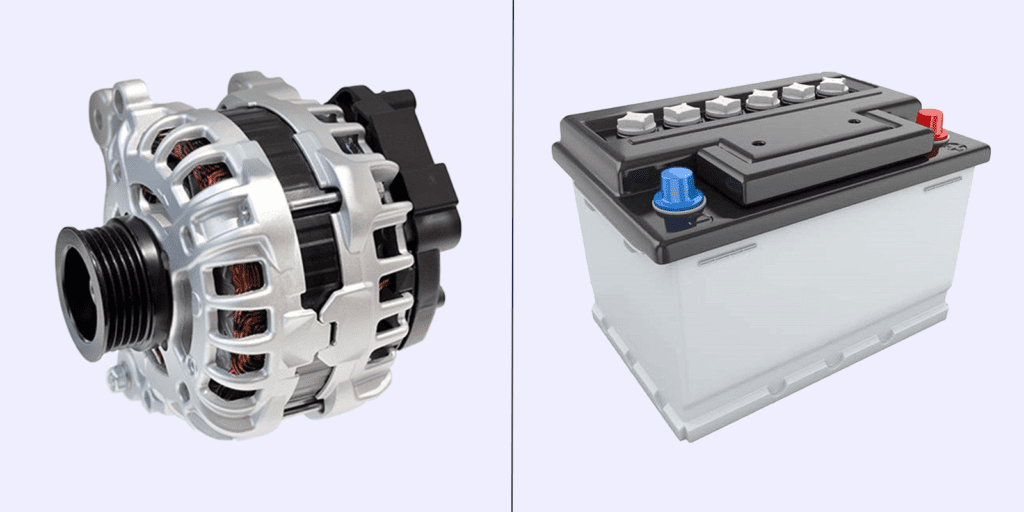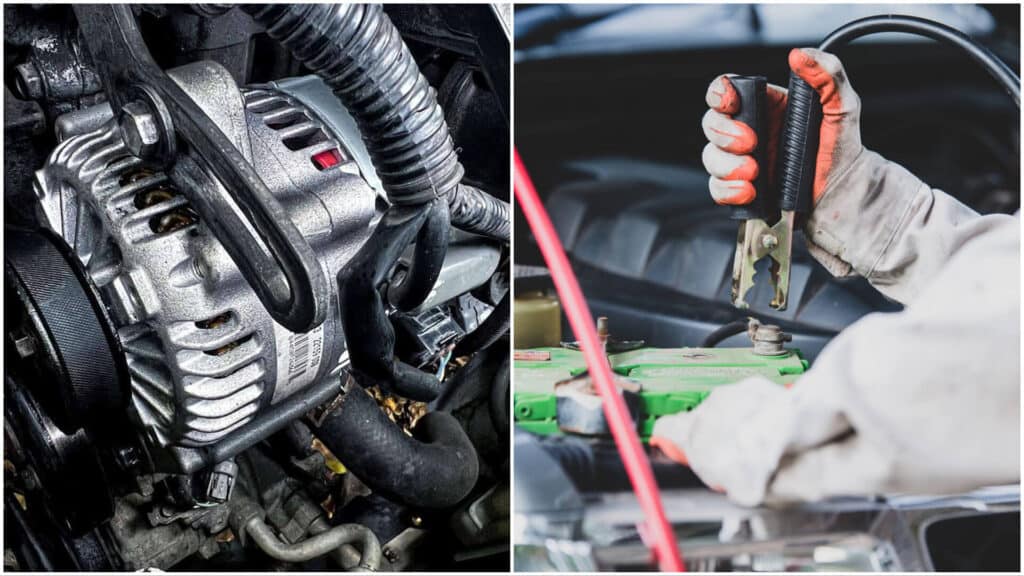Your car’s electrical system is powered by two main components: the alternator and the battery. Together, they work in harmony to keep your vehicle running smoothly. Here’s a breakdown of how they work together, signs of potential issues, and tips for maintenance and replacement.
The Alternator and Battery: A Partnership
The alternator and battery work together to power your car’s electrical system. The alternator is responsible for generating electrical power, which it does by converting mechanical energy from the engine into electrical energy. The alternator then uses this energy to charge the battery and power all of the electrical components in your car, including the lights, radio, and power windows.
The battery, on the other hand, is responsible for storing electrical energy and providing it to the electrical components when the engine isn’t running. The battery is also responsible for starting the engine, as it provides the necessary power to the starter motor.

Is Your Car Battery Dead or Do You Have an Alternator Issue?
Both the alternator and battery can experience issues over time. Here are some signs of potential issues and how to tell them apart:
Battery Issues
• Slow engine crank
• Dimming or flickering lights
• Difficulty starting the engine
• The battery warning light on the dashboard
Alternator Issues
• Dimming or flickering lights while the engine is running
• Squealing or grinding noises coming from the engine
• Electrical components not working properly or at all
• The battery warning light on the dashboard
It’s important to note that some of these symptoms can indicate issues with both the battery and alternator. If you’re not sure which component is causing the issue, it’s best to take your car to a qualified mechanic for inspection.
Alternator Maintenance and Replacement
To maintain your car’s electrical system for optimal performance, there are several maintenance tasks you can perform:
• Regularly clean the battery terminals to prevent corrosion and ensure a good connection.
• Keep the battery and alternator clean to prevent buildup and overheating.
• Check the drive belt regularly and replace it if it shows signs of wear or damage.
• Address any signs of wear or tear on either component immediately to prevent further damage.
If your battery or alternator is failing, it’s important to replace it as soon as possible to prevent further issues. Replacing a battery is typically a simple process, while replacing an alternator may require more extensive work. It’s important to take your car to a qualified mechanic for alternator replacement.

Conclusion
In conclusion, understanding the relationship between your car’s alternator and battery is crucial for ensuring optimal performance of your vehicle. The alternator and battery work together to provide the necessary power to run all the electrical components of your car, and it’s important to maintain both components to avoid issues down the road.
By paying attention to signs of battery or alternator issues and addressing them promptly, you can prevent more significant problems from arising. Regular maintenance of your car’s electrical system is also crucial for optimal performance. By keeping your car’s electrical components clean and well-maintained, you can help extend the life of both the alternator and battery.
If you do need to replace a failing battery or alternator, it’s important to have the job done by a professional to ensure that it’s done correctly. And if you’re in need of a professional to inspect or replace your car’s battery or alternator, consider Uchanics, where our mobile mechanics can come to you at your convenience to ensure your car is running smoothly. Taking these steps to maintain and repair your car’s electrical system can help keep you on the road for years to come.
